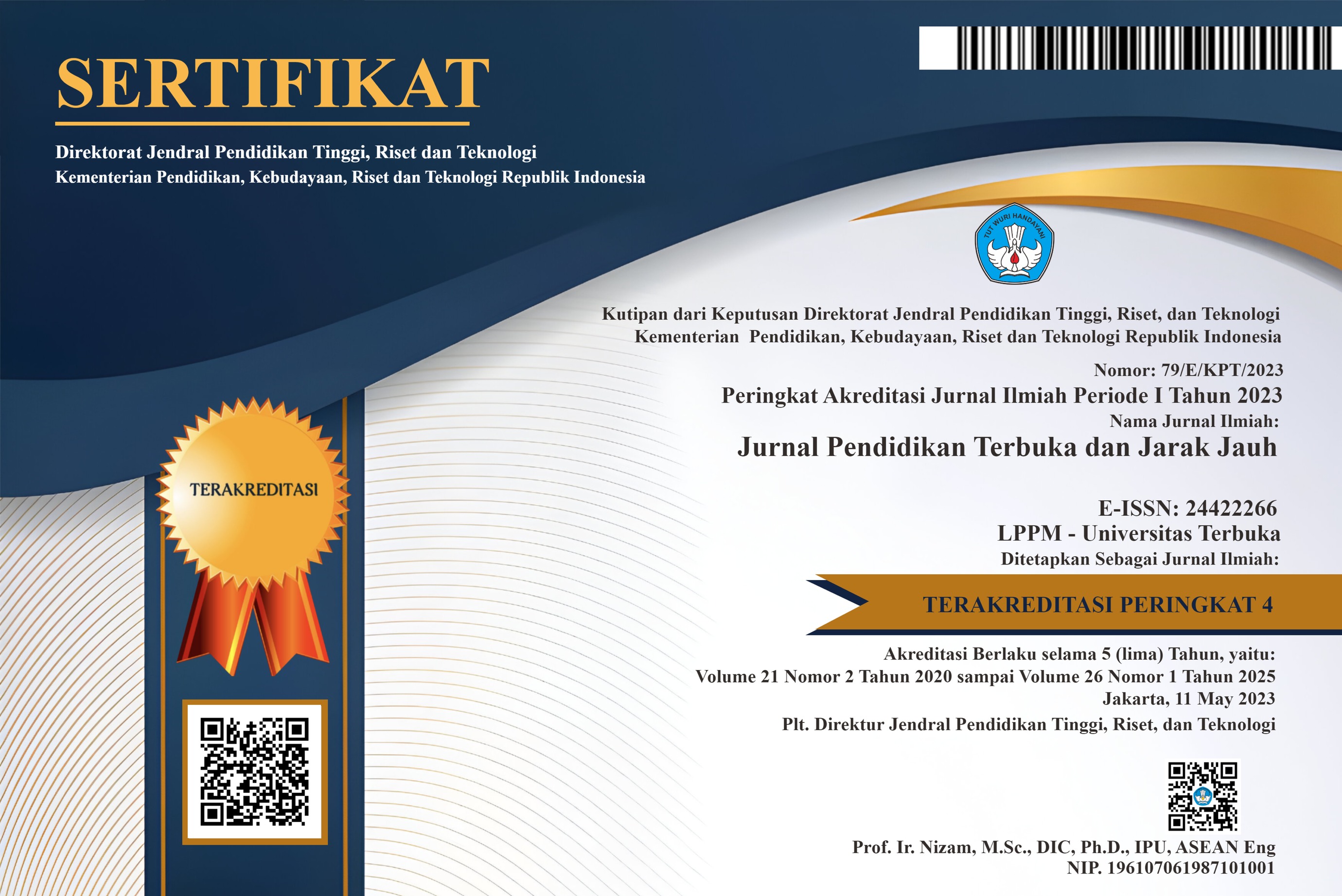PENDEKATAN KONSTRUKTIVISTIK DAN PENGEMBANGAN BAHAN AJAR PADA SISTEM PENDIDIKAN JARAK JAUH
Keywords:
constructivism, distance learning, learning materialsAbstract
Distance learning university has unique characteristics. One of them is the amount of student which is usually larger than the conventional university. In order to serve its students better, both academic and administrative, the distance learning university usually applies a uniform approach in designing students learning activities. The approach covers learning process and examination components. The reason of using this approach is mainly based on managerial factors. The uniform approach which is associated with behavioral learning theory limit the creativity of distance students to construct their knowledge. It is necessary for the distance learning students to have a broad spectrum of knowledge used in daily professional activities. The purpose of the present paper is to elaborate the possibilities of using other approaches that will be able to enhance student knowledge. Instead of using uniform or behavioral approach, there are possibilities to apply a constructivism theory in printed learning material to be used distance learning system.
References
Dick, W, Carey. L & Carey, J.O (2005). The systematic design of instruction. New York: Pearson.
Dryden, J. & Vos, J. (2000). Revolusi cara belajar. Bandung: Kaifa.
Jonassen, D.H. Ed. (1996). Handbook of research for educational communication and technology. New York: Macmillan Library Reference.
Keegan. D (1990). Foundation of distance education. New York: Routledge.
Moore, M.G, & Greg, K. (1996). Distance education: A system view. Belmont: Wadsworth Publishing co.
Miarso, Y. (2004). Menyemai benih teknologi pendidikan. Jakarta: Penerbit Kencana,
Newby, T.J, Stepich, D.R, Lehman, J.D & Russel, J.D. (2000). Instructional technology for teaching and learning: Designing instruction, integrating computers and using media. New Jersey: Prentice Hall Inc.
Phill, R. (1999). 2000 Tips for lecturers. USA: Kogan Page.
Reiser, R.A. & Dempsey, J.V. (2002). Trends and issues in instructional design and technology. Ohio: Merril - Prentice Hall.
Rowntree, D. (1990). Teaching through self-instruction: How to develop open learning materials. New York: Kogan Page. 1990
Setijadi. (1988). Indonesia: Universitas Terbuka. Prospects.
Smaldino, S,E. Russell, J.D, Heinich, R & Molenda, M. (2005). Instructional technology and media for learning. New Jersey: Pearson Merril Prentice Hall.
Snelbecker, J. E. (1974). Learning theory, instructional theory, and psycho educational design. New York: McGraw Hill Book Company.
Woolfolk, A. (2004). Educational psychology. New York: Pearson.





